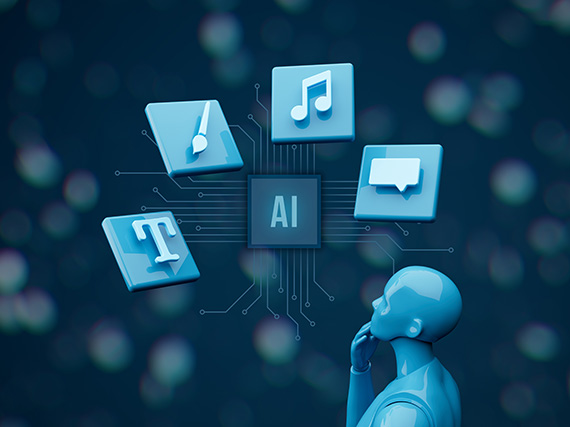How to make generative AI boring – and productive
By Industry Contributor 7 July 2023 | Categories: feature articles
By Kumi Chetty, Acting Solutions Lead, HPE South Africa
Recently, the situation around ChatGPT was compared with the hype that was unleashed by the appearance of AI “Watson” in the Jeopardy show in 2011. The question that follows is: will we face another “AI winter”? Or will the bold promises of generative AI and large language models be fulfilled?
The most likely scenario for South African companies embarking on their AI journeys is that this time we’ll strike a balance. Tech analyst Benedict Evans suggested that generative AI will play out as a “boring automation of boring processes in the boring back-offices of boring companies.” This may sound pessimistic at first glance, but these “boring” use cases will actually be those that create business outcomes at scale.
AI assistant helps factory personnel operate a robot
Consider an application which was developed by Hewlett Packard Enterprise and AI company Aleph Alpha: It’s a generative-AI assistant that increases efficiency and safety when installing, operating and maintaining an industry robot. It acts like a highly specialised service technician who supports the factory staff in solving complex tasks.
When communicating with the AI assistant, the factory staff does not have to adhere to any predefined system or use any specific terminology. The dialogue is also possible in several languages, regardless of the language with which it was trained. A simple example of dialogue would be: “Emergency! How can I stop the robot immediately?” Answer: “Press the emergency stop button. It's the big red button on the top right of the handheld unit.”
The exchange with the AI assistant can also take place via images. Example: When calibrating the robot, an operator takes a picture of a specific calibration mark with a smartphone or tablet and asks if that is the correct calibration position.
Generative AI can increase efficiency and safety – in the factory and beyond
These capabilities can contribute significantly to the efficiency and safety of robot operations. The factory staff is not dependent on the help of a specialised service technician for many detailed questions about installation, maintenance or troubleshooting. That saves time and money. The AI assistant also supports factory personnel in complying with safety regulations – for example, by having an operator photograph the robot’s standing position and asking whether this position is safe. In the event of acute problems, the AI assistant can provide crucial information to prevent damage or production downtime.
The capabilities of such an AI assistant can be extended to the entire production environment of a factory and also to the supply chain – for example by being trained with further technical documentation as well as with information on suppliers, supply agreements, legal terms and regulations, costs, or CO2 emitters. Generative AI is thus becoming a tool to reduce costs, minimise risks and improve sustainability along the entire supply chain.
You cannot accept fake content in industrial production
Contrary to the current hype mindset, implementing such applications requires a realistic view of the technology’s risks and limitations, thorough planning, and rigorous execution. This is especially true for industrial production. This is a place where you cannot accept fake content or biased recommendations. And carving out a few percentage points of efficiency might seem boring to AI evangelists, but in hyper-competitive markets such as automotive supplies they can give you a decisive advantage.
Operationally, a generative AI initiative in the enterprise will typically start with experiments, pilots and proofs of concept. Research shows almost 40 percent of South African businesses have implemented AI in some form. However, if the goal is to move from pilot to production at scale, a whole range of strategic, organisational and technical prerequisites and dependencies must be considered right from the beginning.
This includes basic requirements such as expertise in regard to data value creation and artificial intelligence, as well as the integration of AI assistants in operational security and risk management processes. Running the large language model on a private on-premises infrastructure helps protect trade secrets and avoid cloud dependencies. And finally, the AI model must enable the explainability of the content it generates – this means it must be possible to trace back the content to its data sources. In this way, AI-generated content without suitable, trustworthy sources can be withheld directly.
Hard work, patience and perseverance
Making generative AI productive in the enterprise is not fancy. It’s hard, sometimes boring work. It’s not about saving the planet or disrupting an entire industry – it’s about creating incremental savings in day-to-day operations, accelerating business processes, and preventing outages.
This also requires patience and perseverance, which is perhaps why more than half of South African businesses feel they aren’t well prepared to implement AI. But it has been said that generative AI is like having thousands of smart interns at your fingertips. In other words, it’s possible to achieve remarkable increases in productivity right now, but there’s much more promise for the future. However, this promise will only be fulfilled if companies in South Africa invest in further training – both of the technology and of their own ability to create value with it.
Most Read Articles

Have Your Say
What new tech or developments are you most anticipating this year?



